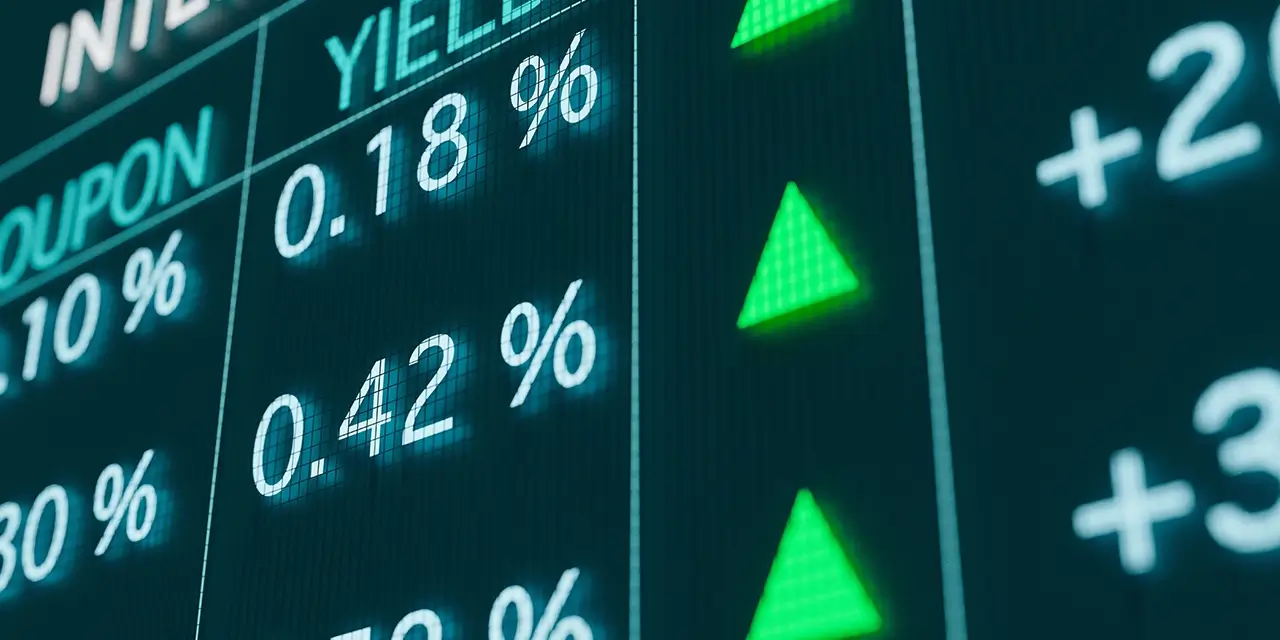By Caroline Grimont
I hate to use the C-word, but I can’t help it – 2025 has been the year of Chaos. 25% tariffs! No tariffs! 125% tariffs! 10% tariffs! Now it’s on! Wait, it’s off! The market has crashed! Wait, it’s soared! No, it’s down! You get the drift.
John Maynard Keynes allegedly said that the markets can remain irrational much longer than you (or I) can remain solvent, and frankly, this year has pretty much defined that sentiment so far.
All this back-and-forth makes me feel like I’m sitting courtside at Wimbledon, but apart from waiting for the appropriate time to cheer, what’s an investor to do? The correct answer, of course, is do nothing yourself. Instead, focus on your financial goals, and leave the decision making to the experts.
Investing can be hard for retail investors to consistently gauge accurately. For one thing, investors need to first decide what asset classes to buy – stocks? Bonds? Both? – and then decide what percentage should be allocated to each asset class, and then they need to find the right entry point for each. I don’t know about you, but it would be nearly impossible for me to accurately make these decisions, and then consistently track these decisions in order to maintain my portfolio in the right balance.
However, all is not lost. There is one way to avoid some of the guesswork of building out a portfolio with a sensible mix of fixed income and equity using stocks and bonds or other investment vehicles. This comes in the form of products that are often cheaper, more liquid, and easier to access than mutual funds. These products are called Asset Allocation ETFs (exchange traded funds).
Asset allocation ETFs are easily accessible, cost-effective products that give investors access to diversified portfolio within a single investment. Most of these products are automatically rebalanced, keeping your portfolio aligned with its target allocation (for example, a 60% stock and 40% bond allocation) which means you don’t have to worry about periodically adjusting your investments.
Since these are all-in-one options, this removes the need to buy multiple funds, and many of these funds have lower fees than mutual funds with the same functionality. And because they are ETFs, they trade like a stock on exchanges, meaning they are liquid, and you can buy them and sell them whenever you like.
If all of this sounds great, and your plan is to get a regular stream of monthly income, then consider exploring the Harvest Balanced Income and Growth ETF (HBIG:TSX).
What is HBIG?
The Harvest Balanced Income & Growth ETF has a 60/40 portfolio, which means it invests in a portfolio of ETFs and has target allocation of 60% towards large-cap equity securities, and 40% to investment grade bonds or money market instruments issued by corporations or governments. The fund delivers both the opportunity for capital appreciation, and high monthly cash distributions, which are supported by covered call strategies.
On the equity side, the ETF holds eight of Harvest’s sector ETFs, that have exposure to stocks in Canada and the U.S., as well as global names, holding sectors like healthcare, technology, utilities, REITs, industrials, energy, and banks.
On the fixed income side, the ETF holds five fixed income ETFs that invest in government bonds, and cash equivalents.
Will I Get Income with HBIG?
Canadians love receiving regular cash distributions from their investments and one of the advantages that HBIG has over many other asset allocation ETFs is that HBIG makes monthly cash distributions which are supported by a covered call strategy employed by the underlying ETFs.
As Harvest ETFs explains it, “Covered call option writing is about striking the right balance. At its most basic level, when you write a covered call option, you gain premiums but can miss some market upside.” You can find out more about covered calls here.
On the equity portion of the portfolio, HBIG provides access to equity income ETFs that write covered call options on up to 33% for their portfolio holdings. This helps the ETF generate more frequent cash flows, while also remaining flexible enough to take advantage of short-term market actions and moves. As a result, investors continue to be exposed to potential market upside on approximately 66% of the portfolio, while gaining consistent monthly cashflow on the remainder. On the fixed income portion of the portfolio, investors get access to select ETFs that could have 100% covered call options.
As my colleague Ambrose O’Callaghan wrote, “Covered call ETFs generate cash flows for unitholders from a portfolio of securities with a covered call option writing strategy. Harvest launched its first ETFs in 2016. Since then, it has established itself as one of the top covered call option writing firms in Canada. Harvest utilizes an active and flexible call option strategy to build high yield ETFs that pay monthly distributions and still capture the opportunity for market growth.”
From a tax standpoint, it is important for Canadian investors to remember that this income received from covered calls is considered capital gains and is not considered interest income. This is important, because 50% of income from capital gains (up to $250,000) is generally tax free, while the remainder is taxed at your marginal rate. However, interest income is taxed as ordinary income.
How Much Does HBIG Cost?
There is no management fee on HBIG, however, the ETF is subject to the fees of the underlying funds in the portfolio. For this price, investors get a carefully curated and regularly reviewed portfolio of stocks and bonds, along with covered call options written on a portion of the portfolio to ensure monthly income.
How to Buy HBIG?
Investors can buy HBIG via online discount brokerages, or through brokers. The ETF may be held both in registered accounts such as an RRSP, RESP or TFSA, or in non-registered accounts.
What is the Risk Rating of HBIG?
Investors should remember that this is a fund that invests in both stocks and bonds, and so its value can either rise or fall. What this means is that investors could lose money, depending on when they buy and sell this ETF.
As Harvest ETFs explains in HBIG’s documentation, “One way to gauge risk is to look at how much the ETF’s returns change over time. This is called ‘volatility.’ In general, ETFs with higher volatility will have returns that change more over time. They typically have a greater chance of losing money and may have a greater chance of higher returns. ETFs with lower volatility tend to have returns that change less over time. They typically have lower returns and may have a lower chance of losing money.”
Harvest has rated the volatility of this ETF as low-to-medium.
Who is HBIG For?
HBIG is for investors who want to both exposure to a balanced portfolio of ETFs, as well as high income. As this fund invests in both equities and fixed income, it is not suitable for investors who have a very short-term time horizon but is more for investors who want to invest for the medium to long-term. Finally, it is not suitable for extremely conservative investors, as equities do have ups and downs.
Disclaimer
Commissions, management fees and expenses all may be associated with investing in Harvest Exchange Traded Funds (managed by Harvest Portfolios Group Inc.) Please read the relevant prospectus before investing. This article is meant to provide general information for educational purposes. Any security or investment mentioned herein is for illustration purposes and should not be taken as an invitation to purchase or sell such security or investment. The content of this article should not be construed as investment advice. Tax, investment and all other decisions should be made with guidance from a qualified professional.











